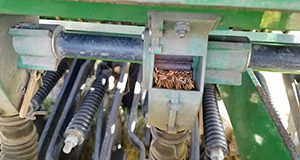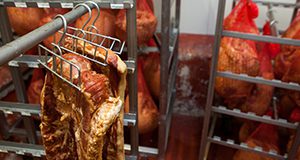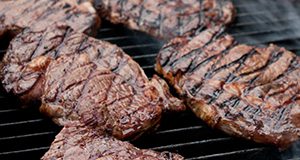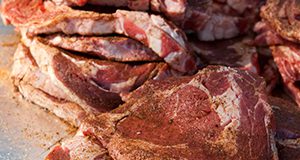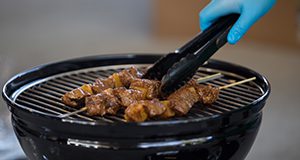Establishing forages from seeds often requires precision equipment to achieve specific seeding rates for a proper pasture stand. Most pieces of equipment have calibration charts, which are useful guides for making an initial setting. However, due to variations in seed size, purity, moisture content, equipment performance, ground speed, and other factors, calibrating equipment prior to each use is recommended. This 5-page document discusses a few calibration techniques for drills and broadcast spreaders. Written by Marcelo Wallau, Joao Vendramini, and Ed Jennings, and published by the UF/IFAS Agronomy Department, revised November 2018.
http://edis.ifas.ufl.edu/ag158
Tag: Edward W. Jennings
Florida 4-H Tailgate: Smoking and Slow Cooking Meat
The Florida 4-H Poultry BBQ program has existed for years, and the program for red meat cookery has been a huge success in Tennessee 4-H. With sponsorship for the winners at the state level, the Florida 4-H Tailgate Contest program will be a success in Florida as well. This program will strive to promote enjoyable outdoor cooking experiences, encourage the incorporation of animal protein in the diet in order to combat childhood obesity, improve youth nutritional knowledge and cooking skills, and impart knowledge about safe handling and proper degree of doneness to produce safe and delicious meat dishes. This 2-page fact sheet is the fourth publication in the Florida 4-H Tailgate series, and it discusses smoking and slow cooking meat. Written by Chad Carr, Brian Estevez, Sonja Crawford, Jason Scheffler, George Baker, Ed Jennings, and Mark Mauldin, and published by the 4-H Youth Development Department, December 2016.
http://edis.ifas.ufl.edu/4h375
Florida 4-H Tailgate: Fire-Building
The Florida 4-H Poultry BBQ program has existed for years, and the program for red meat cookery has been a huge success in Tennessee 4-H. With sponsorship for the winners at the state level, the Florida 4-H Tailgate Contest program will be a success in Florida as well. This program will strive to promote enjoyable outdoor cooking experiences, encourage the incorporation of animal protein in the diet in order to combat childhood obesity, improve youth nutritional knowledge and cooking skills, and impart knowledge about safe handling and proper degree of doneness to produce safe and delicious meat dishes. This 2-page fact sheet is the third publication in the Florida 4-H Tailgate series, and it discusses fire-building. Written by Chad Carr, Brian Estevez, Sonja Crawford, Jason Scheffler, George Baker, Ed Jennings, and Mark Mauldin, and published by the 4-H Youth Development Department, December 2016.
http://edis.ifas.ufl.edu/4h374
Florida 4-H Tailgate: Meat Selection
The Florida 4-H Poultry BBQ program has existed for years, and the program for red meat cookery has been a huge success in Tennessee 4-H. With sponsorship for the winners at the state level, the Florida 4-H Tailgate Contest program will be a success in Florida as well. This program will strive to promote enjoyable outdoor cooking experiences, encourage the incorporation of animal protein in the diet in order to combat childhood obesity, improve youth nutritional knowledge and cooking skills, and impart knowledge about safe handling and proper degree of doneness to produce safe and delicious meat dishes. This 2-page fact sheet is the fifth publication in the Florida 4-H Tailgate series, and it discusses meat selection. Written by Chad Carr, Brian Estevez, Sonja Crawford, Jason Scheffler, George Baker, Ed Jennings, and Mark Mauldin, and published by the 4-H Youth Development Department, December 2016.
http://edis.ifas.ufl.edu/4h376
Florida 4-H Tailgate: Cooking Safety
The Florida 4-H Poultry BBQ program has existed for years, and the program for red meat cookery has been a huge success in Tennessee 4-H. With sponsorship for the winners at the state level, the Florida 4-H Tailgate Contest program will be a success in Florida as well. This program will strive to promote enjoyable outdoor cooking experiences, encourage the incorporation of animal protein in the diet in order to combat childhood obesity, improve youth nutritional knowledge and cooking skills, and impart knowledge about safe handling and proper degree of doneness to produce safe and delicious meat dishes. This 3-page fact sheet is the second publication in the Florida 4-H Tailgate series, and it addresses cooking safety. Written by Chad Carr, Brian Estevez, Sonja Crawford, Jason Scheffler, George Baker, Ed Jennings, and Mark Mauldin, and published by the 4-H Youth Development Department, December 2016.
http://edis.ifas.ufl.edu/4h373
Florida 4-H Tailgate: Cooking Equipment
The Florida 4-H Poultry BBQ program has existed for years, and the program for red meat cookery has been a huge success in Tennessee 4-H. With sponsorship for the winners at the state level, the Florida 4-H Tailgate Contest program will be a success in Florida as well. This program will strive to promote enjoyable outdoor cooking experiences, encourage the incorporation of animal protein in the diet in order to combat childhood obesity, improve youth nutritional knowledge and cooking skills, and impart knowledge about safe handling and proper degree of doneness to produce safe and delicious meat dishes. This 2-page fact sheet is the first publication in the Florida 4-H Tailgate series, and it discusses cooking equipment. Written by Chad Carr, Brian Estevez, Sonja Crawford, Jason Scheffler, George Baker, Ed Jennings, and Mark Mauldin, and published by the 4-H Youth Development Department, July 2016.
http://edis.ifas.ufl.edu/4h372
Creeping Indigo, A Poisonous Plant of Concern in Florida Pastures
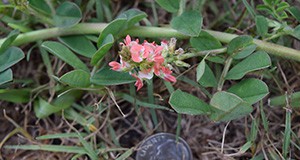 A recent rise in suspected horse poisonings has brought new attention to creeping indigo (Indigofera spicata), a toxic plant which has reportedly been in Florida for as long as 90 years. This new 5-page fact sheet covers plant description, signs of creeping indigo toxicity, and roles of creeping indigo’s toxins, as well as treatment and management. Written by Robert MacKay, Ed Jennings, Brent Sellers, Jason Ferrell, and Amanda House, and published by the UF Department of Agronomy, August 2015.
A recent rise in suspected horse poisonings has brought new attention to creeping indigo (Indigofera spicata), a toxic plant which has reportedly been in Florida for as long as 90 years. This new 5-page fact sheet covers plant description, signs of creeping indigo toxicity, and roles of creeping indigo’s toxins, as well as treatment and management. Written by Robert MacKay, Ed Jennings, Brent Sellers, Jason Ferrell, and Amanda House, and published by the UF Department of Agronomy, August 2015.
http://edis.ifas.ufl.edu/ag399
Control of Lantana in Pastures (SSAGR359/AG368)
Lantana is currently one of the top 10 most troublesome weeds in Florida. Although it is still sold as an ornamental, commercial varieties are sterile and considered to be non-invasive. It can quickly invade disturbed sites by producing plant toxins in its roots and stems, that either slow the growth of other plants or totally remove them. These leaf toxins are damaging to grazing animals. If animals consume the leaves, they often begin to show symptoms of skin peeling or cracking. Once animals show these symptoms, there is little or no treatment that can reverse the process. Although lantana’s leaves are poisonous, its berries are not. Birds readily consume the fruit and disperse the seed. This 2-page fact sheet was written by J. Ferrell, B. Sellers, and E. Jennings, and published by the UF Department of Agronomy, February 2012.
http://edis.ifas.ufl.edu/ag368
AN244 Winter Feed Estimator: A Practical Tool for the Beef Cow-Calf Producer
AN244, a 3-page fact sheet by Mark Warren, Ed Jennings, and Matt Hersom, provides a simple approach for estimating dry matter feed requirements of the beef herd and then converting those requirements into an estimate of required hay or silage round rolls. Published by the UF Department of Animal Science, June 2010.
http://edis.ifas.ufl.edu/an244
AN229 Fresh Meat Selection for Consumers
AN229, a 5-page illustrated fact sheet by Chad Carr, Ed Jennings, and Larry Eubanks, aims to provide consumers with a solid working knowledge of fresh meat terminology so that they can select meat cuts that will perform desirably in all recipes. Includes references. Published by the UF Department of Animal Science, October 2009.
http://edis.ifas.ufl.edu/AN229
VM-171/VM133 Methods of Large Animal Carcass Disposal in Florida
VM-171, a 4-page fact sheet by J.K. Shearer, Max Irsik and Ed Jennings, describes for livestock producers several methods of carcass disposal — burial, composting, tissue digestion, incineration, and rendering. Includes references. Published by the UF College of Veterinary Medicine — Department of Large Animal Clinical Sciences, July 2008.
http://edis.ifas.ufl.edu/VM133
